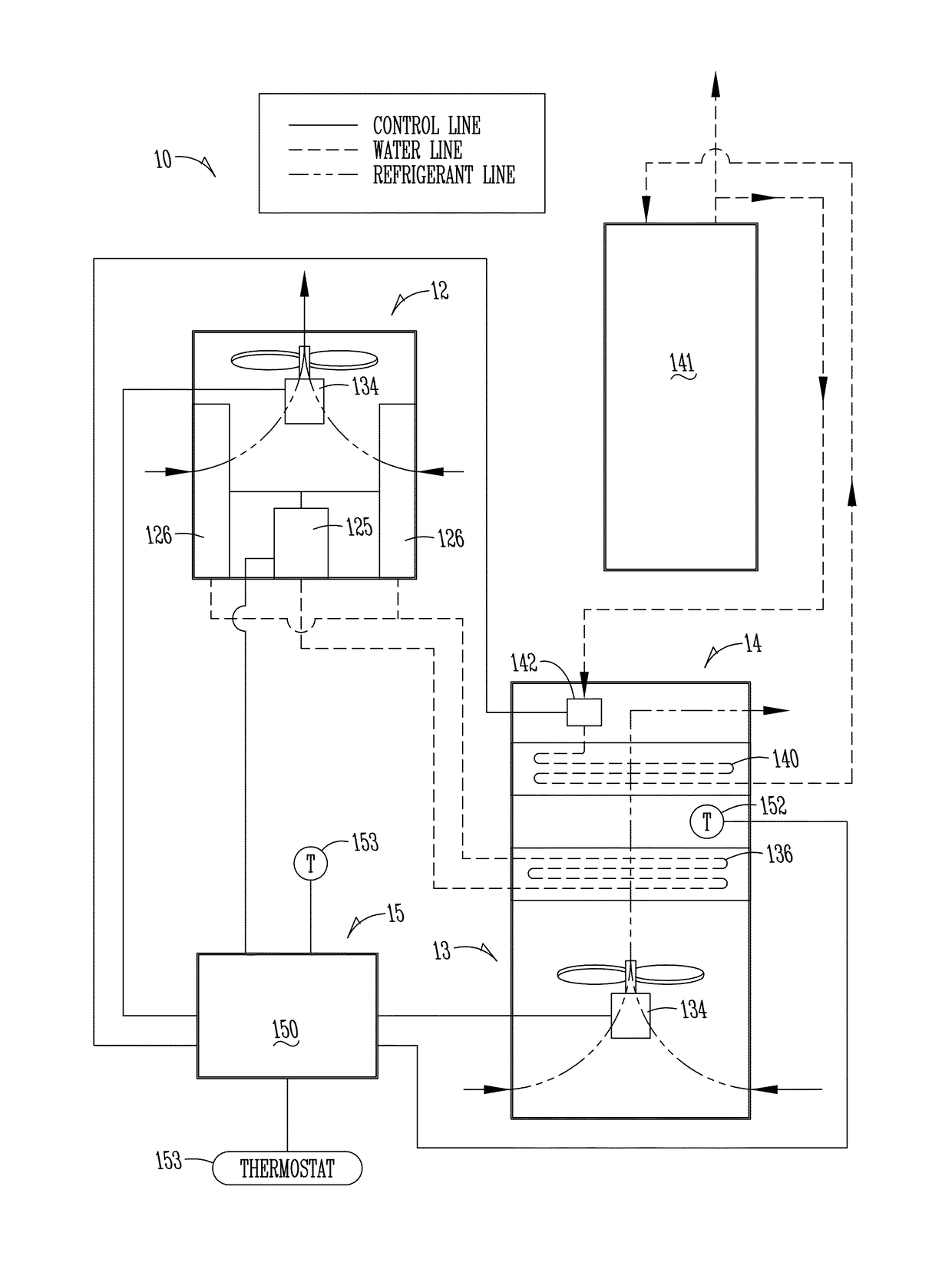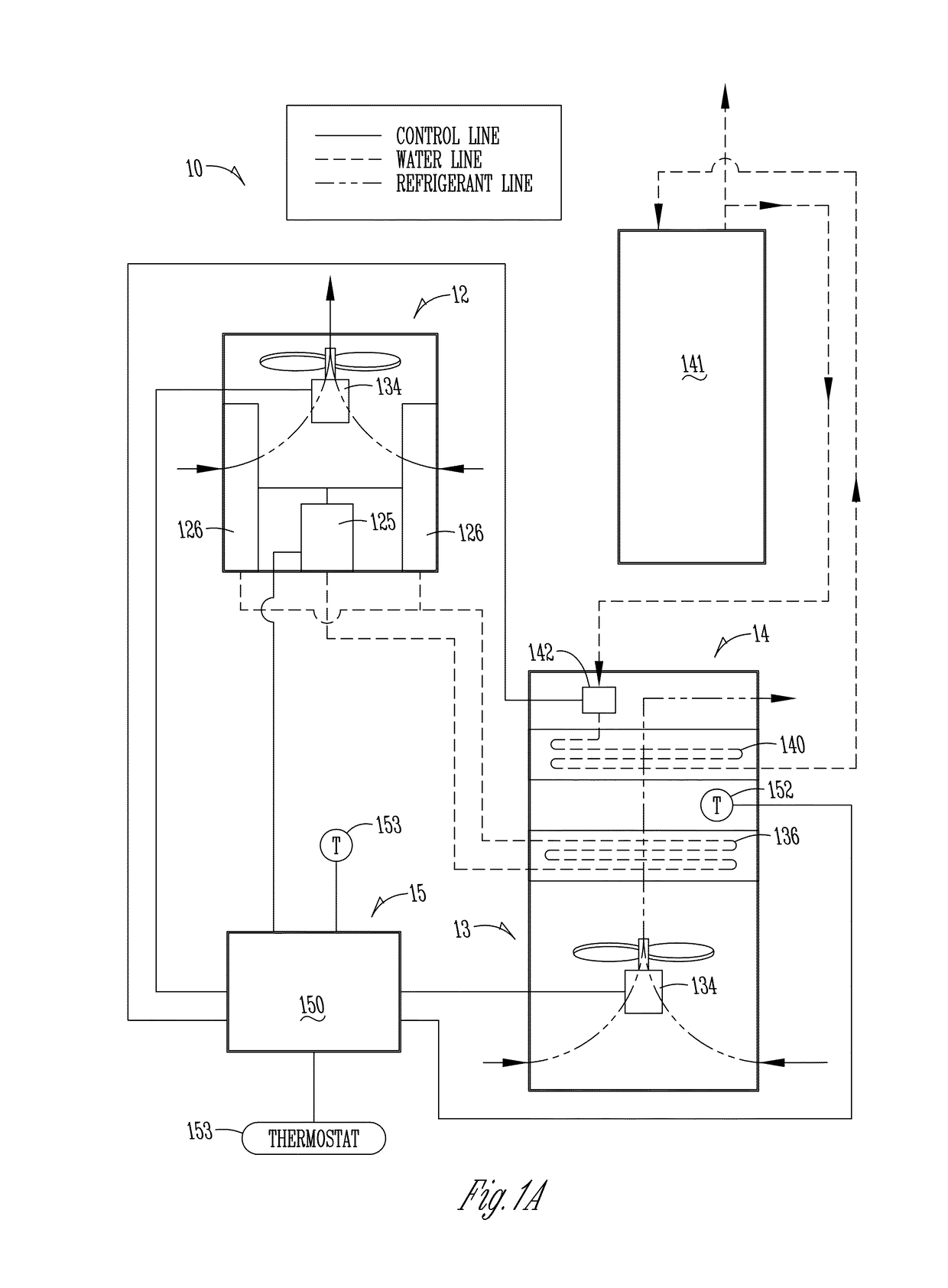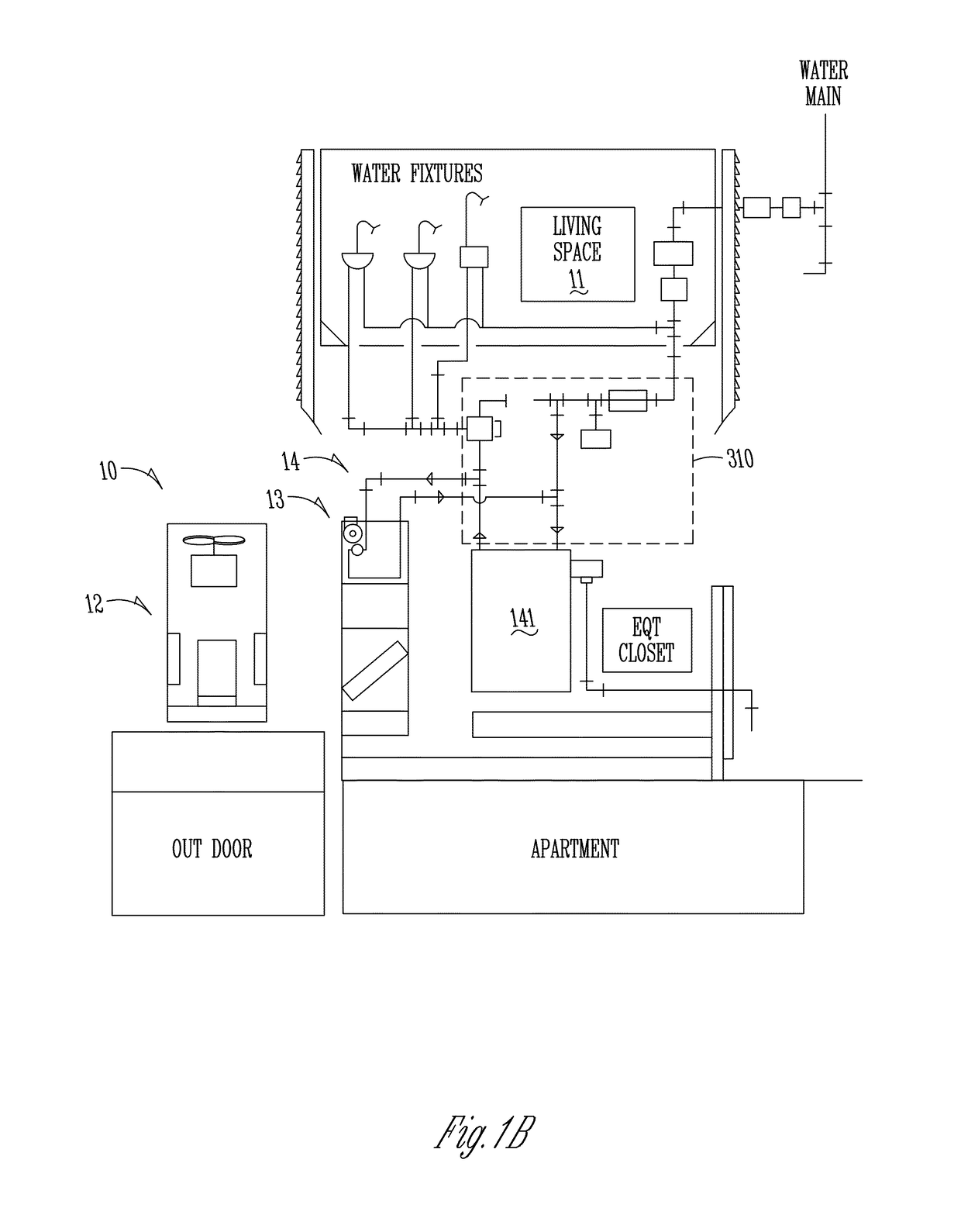HVAC apparatus, method, and system
a technology of hvac equipment and equipment, applied in the field of hvac equipment, can solve the problems of limited installation locations and spaces, many factors that need to be considered, and achieve the effect of improving the state of the ar
- Summary
- Abstract
- Description
- Claims
- Application Information
AI Technical Summary
Benefits of technology
Problems solved by technology
Method used
Image
Examples
Embodiment Construction
[0072]A. Overview
[0073]For a better understanding of the invention, examples of specific forms the invention and its aspects can take will now be described in detail. These examples are neither inclusive nor exclusive of all forms the invention and its aspects can take. Variations obvious to those skilled in the art will be included within the invention which is solely described by the appended claims. These exemplary embodiments will be described in the context of an HVAC system including a commercially available outdoor refrigeration-based heat pump, an indoor air handler component that supplies or is connected to duct work to supply conditioned air to an indoor space, a supplemental or booster heat supply, in this example, a hydronic subsystem, and a control subsystem to operate the components. These examples will primarily be in the context of the indoor air handler subsystem principally housed in a highly configurable but highly efficient assembly which can receive conventional...
PUM
 Login to View More
Login to View More Abstract
Description
Claims
Application Information
 Login to View More
Login to View More - R&D
- Intellectual Property
- Life Sciences
- Materials
- Tech Scout
- Unparalleled Data Quality
- Higher Quality Content
- 60% Fewer Hallucinations
Browse by: Latest US Patents, China's latest patents, Technical Efficacy Thesaurus, Application Domain, Technology Topic, Popular Technical Reports.
© 2025 PatSnap. All rights reserved.Legal|Privacy policy|Modern Slavery Act Transparency Statement|Sitemap|About US| Contact US: help@patsnap.com



